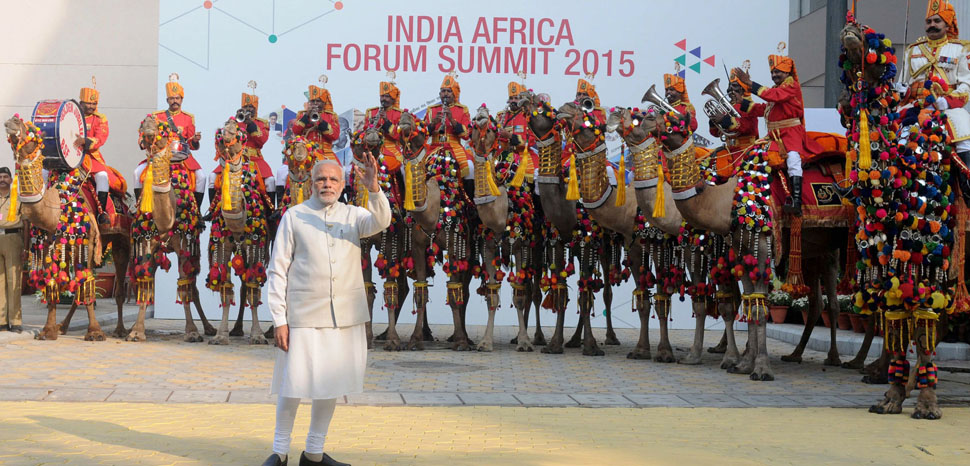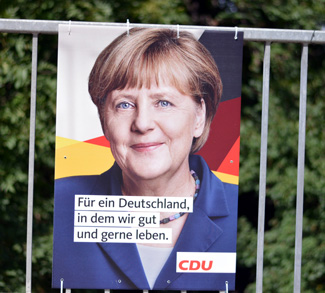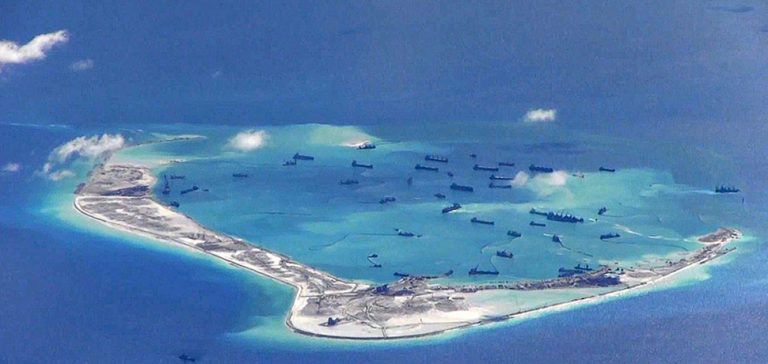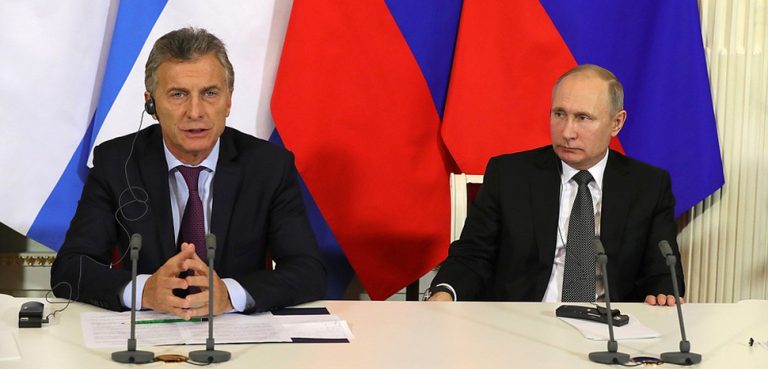After making his first ministerial visit to Africa over three years ago, Indian Prime Minister Narendra Modi’s interest in deepening India’s trade relationship and security cooperation with the continent has swelled. Though their trade relationship dates centuries, Indo-African trade stood at just $1 billion 25 years ago. With present bilateral trade valued at over $60 billion, the Modi government hopes to improve the figure to $150 billion by 2023.
Though such figures pale in comparison to Africa’s trade with China and the European Union, India’s standing as a burgeoning investor, donor, and security partner contains considerable appeal for several governments on the continent. Concerns over China’s economic and political influence across sub-Saharan Africa has restored fears of quasi-colonialist control, compelling several governments to hedge against the threat via diversification of foreign partnerships.
For India, bolstering ties with African governments aligns neatly with BJP government’s foreign policy, dubbed the “Modi Doctrine.” Among other aims, the Modi Doctrine closely links Indian foreign policy aims with the key initiatives that comprise Modi’s economic agenda, including the vaunted “Make in India” campaign, which seeks to encourage manufacturers to establish operations in the country.
Furthermore, in an effort to enhance economic cooperation between India and Africa, the Modi government, in conjunction with Japan, outlined a vision three years ago for an Asia-Africa Growth Corridor (AAGC), an agreement that would advance maritime trade links between South/Southeast Asian and African ports. Underpinning India and Japan’s commitment to the AAGC is the hope that the initiative will enable domestic exporters to take advantage of Africa’s favorable demographic trends, specifically Africa’s share of global population growth and expanding middle class.
Though it is often portrayed as an Indo-Japanese alternative to China’s signature Belt and Road Initiative (BRI), the AAGC isn’t expected to contribute much in terms of physical infrastructure. Instead, the bulk of AAGC investment is expected to concentrate on Africa’s agricultural, healthcare, and pharmaceutical sectors, each of which represent industries where China has negligible involvement and where India enjoys advantages in terms of cost and expertise.
While it doesn’t expect to directly compete with Beijing, Modi’s pitch to his African counterparts often emphasizes that a relationship with New Delhi has no strings attached, whereas China’s “debt diplomacy” model continues to endure criticism for its practice of lending through unsustainable terms. In addition, India highlights that its engagement remains oriented toward industries that lead to human development, by improving food security and access to quality healthcare. With China fending off allegations that its projects rely on Chinese labor at the expense of local job creation, India is well-positioned to take advantage of its reputation as an non-exploitative and politically palpable partner.
On the security front, the African Union’s desire to diversify its member states’ security partnerships presents opportunities for India to rekindle its historic involvement in conducting training missions and dispatching advisors. The Indian Army, noted as one of the largest troop contributors to UN peacekeeping missions, continues to maintain close links with several militaries on the continent, conducting joint exercises and providing training exchange programs for cadets and officers. India’s overtures also serve a secondary purpose in expanding market access for its domestic arms manufacturers. The intensification of counter-insurgency missions in the Sahel, in addition to modernization agendas for the militaries of Algeria, South Africa, Nigeria, Ethiopia, and Kenya, among others, signals growing opportunities for arms sales to the continent.
Yet, in spite of India’s ambitions in Africa, limitations in the makeup of the present relationship persist. India’s investment footprint on the continent is fairly limited, with Indian FDI outflows heavily concentrated in a handful of countries, namely Mauritius (which is party to a favorable tax treaty with India), Mozambique, Egypt, South Africa, and Kenya. Furthermore, nearly 75% of India’s imports from the continent still consist of natural resources and commodities, with a significant amount of Indian exports to Africa comprised of refined petrochemicals.
At a time where a number of Africa’s oil and mineral rich economies are seeking diversification, the nature of Indian trade and investment on the continent will have to respond in kind, with a greater emphasis on consumer goods in electronics and automobiles, which India is able to export cheaply. Furthermore, with hopes that implementation of the African Continental Free-Trade Agreement (AfCFTA) will increase intra-African trade, Indian firms will be incentivized to enter greenfield projects and joint venture investments that take advantage of the continent’s integration, removal of trade barriers, and its lucrative growth projections in private consumption.
Although challenges remain, a number of factors play in favor of India’s continued engagement with the continent. For one, the Indian diaspora on the African continent is sizable, with significant representation in South Africa, Mauritius, Kenya, and Tanzania. These groups possess considerable influence in business and political circles and provide advantageous links and lobbying power for Indian commercial interests. Secondly, America’s retrenchment from the continent under the Trump administration, coupled with increased skepticism and protests over Chinese investment, provides ripe opportunity for a familiar entrant like India.
Throughout his tenure as prime minister, Modi’s appeal to his African counterparts has thus far included playing on the theme of shared struggles for independence, as well as similar developmental challenges that continue to hobble both country’s trajectories. Though Indian investment on the continent outpaced China up until 10 years ago, the financial and political wherewithal to usurp China’s position is unlikely. Instead, the optimal goal for both parties may include ensuring African leaders can expand their economic and security partnerships, while accessing much-needed investment in overlooked sectors like healthcare, agriculture, and pharmaceuticals. Whether India’s vision for a reinvigorated relationship with Africa can be fulfilled will be dependent upon evolving bilateral engagement, from doctrinal summitry to actionable policy, that produces tangible results.




